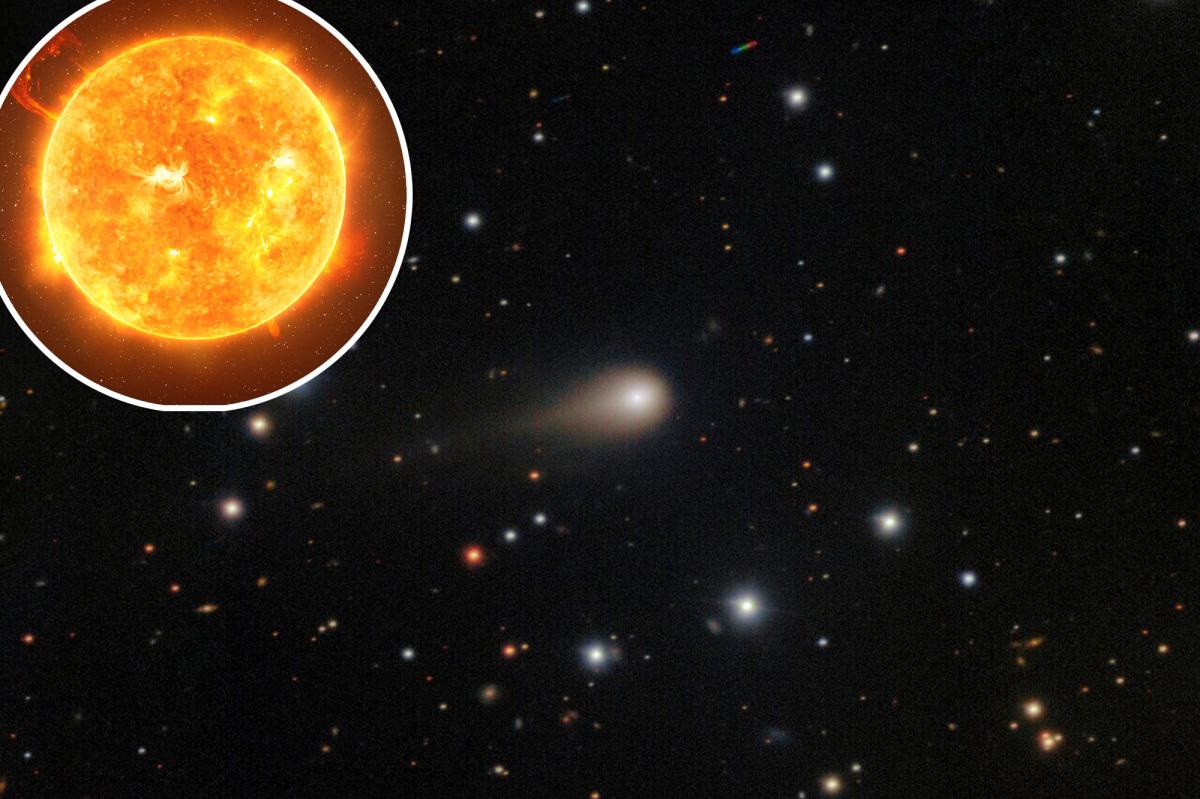It flew too close to the Sun.
Manhattan-sized comet 3I/ATLAS allegedly executed an unusual maneuver while approaching the Sun earlier this week, fueling theories that it could be an extraterrestrial spacecraft.
In a recent blog post, Harvard scientist Avi Loeb cited a report from NASA’s Jet Propulsion Laboratory, which he claimed provided the “first evidence” of a “non-gravitational acceleration” by the celestial body.
It reportedly displayed said behavior while approaching its closet point to our solar star in a phenomenon known as a perihelion.
Loeb noted that while most comets get a slight boost when their ice turns to gas and spouts out like a jet — an event known as the “rocket effect” — 3I/ATLAS was showing way more zip than expected during its approach.
Meanwhile, the JPL readings showed that the so-called comet followed two bizarre-seeming trajectories: one that pulled it away from the Sun and another that nudged it to the side.
Loeb claimed that the “non-gravitational acceleration might be the technological signature of an internal engine,” which also might explain ATLAS’ bizarre change in pigment while nearing our solar system’s light source.
ATLAS had reportedly been growing much brighter — and bluer — than typical as it reached perihelion.
This stands in stark contrast to most comets, which turn red during their solar visits because their surface is so cold that they absorb blue light and bounce back mostly red light — much like how cold metal glows red when heated.
Loeb speculated that the blue hue “could be a signature of ionized carbon monoxide or a hot engine,” although he noted that it could also be an indication that 3I/ATLAS is burning off a large amount of ice during its approach, the Daily Mail reported.
“The non-gravitational acceleration could be a result of cometary evaporation or technological propulsion,” the professor told the outlet.
Loeb has called these latest readings the ninth anomaly showcased by 3I/ATLAS, which is the third known interstellar object to enter our solar system.
Other characteristics that seem to defy comet behavior include an anti-tail — a jet of particles that points toward the Sun instead of away from it as is typical — and the fact that the entity was flying suspiciously close to Jupiter, Venus and Mars.
According to Loeb, this seemed to suggest that ATLAS could be a potentially hostile alien probe that was sent to conduct reconnaissance on Earth.
First Appeared on
Source link













